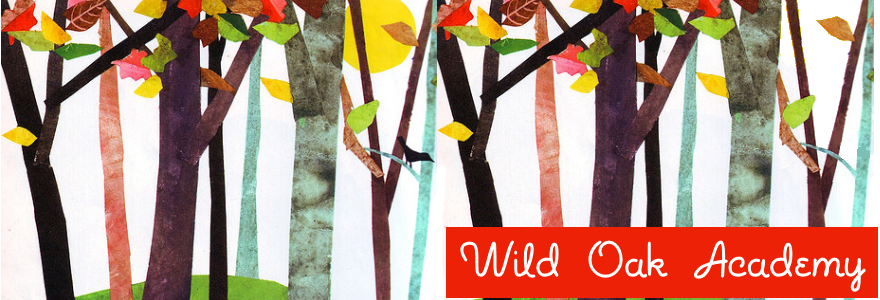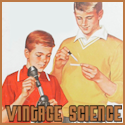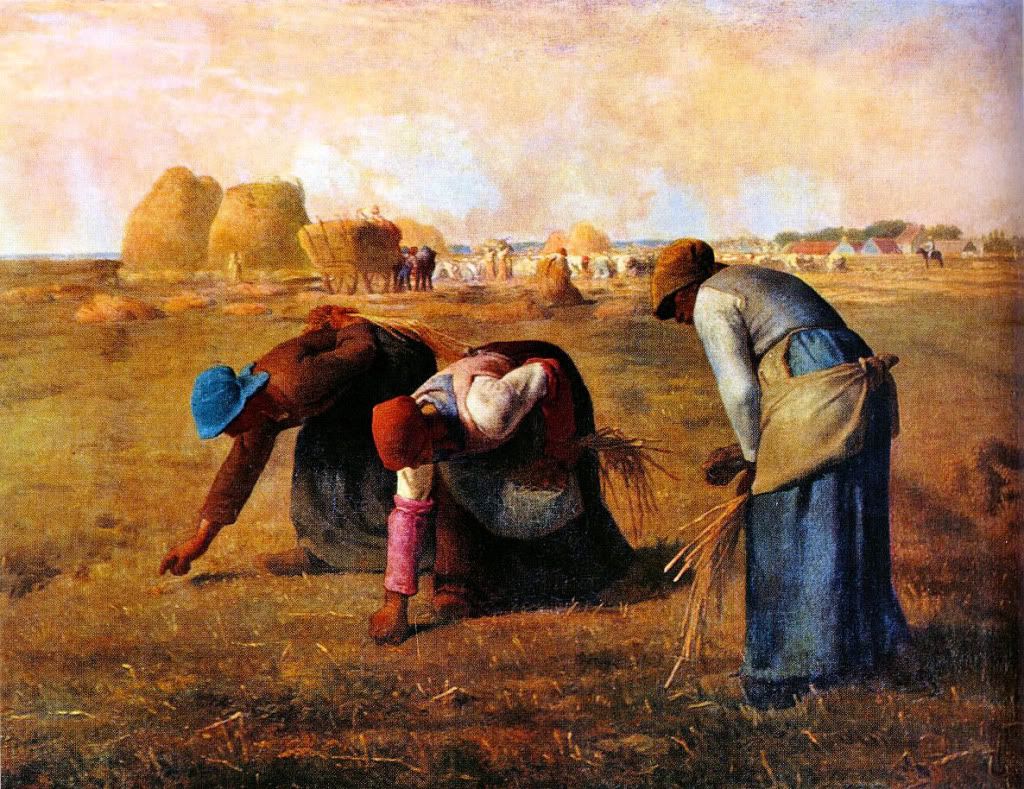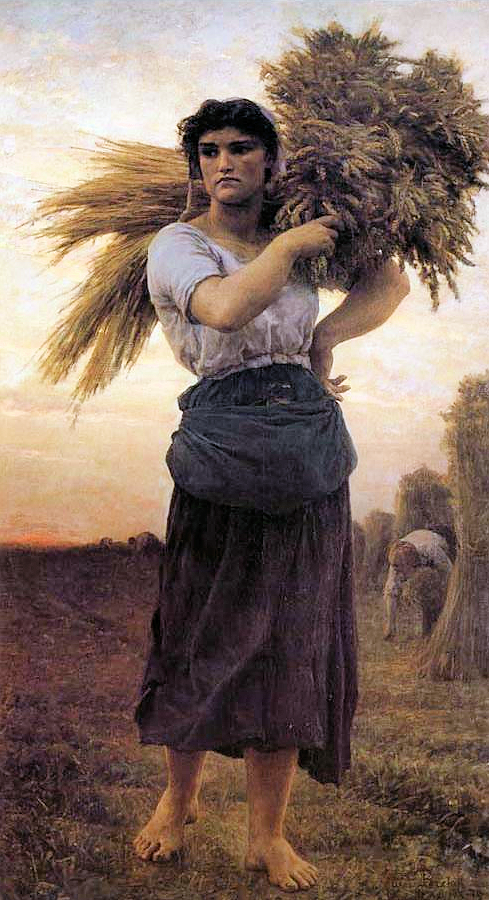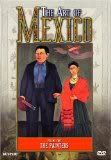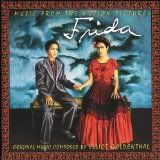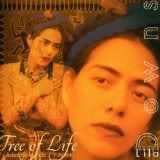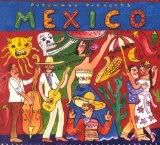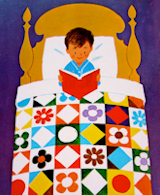Every morning, after breakfast and before we begin our school work (much of which, these days, is done independently), we enjoy our "morning basket" time. This is an idea that I borrowed from Jen at Wildflowers and Marbles and is explained in great detail here.
While the routine varies slightly each day and is quite flexible, the essentials remain the same. We do not do each thing every day, the only constants are morning prayers and catechism.
- Light a candle
- Morning prayers
- Saint of the day reading
- Catechism
- Devotional reading
- Seasonal story and poetry: Selections can be liturgical, nature or holiday-related
- Character study and memory gem
- Picture study
- Review schedules for the day (assign independent work)
- Blow out candle
While I'm reading the kids usually color a page from my stash of vintage, Catholic, Bellerophon, and Dover coloring books (I'll be adding some from Pomegrantate Press soon also). I'm a firm believer that coloring is a soothing activity at any age, though some mornings they prefer to sculpt with clay or modeling beeswax. M, in particular, is very fidgety and this seems to help her stay "present."
Overall, our morning basket time provides a nice foundation for the day and allows us to get focused in a gentle and beautiful way.
I've elaborated a bit more on the details below.
Faith:
Following our morning prayers, most days begin with a reading from Saints for Young Readers for Every Day and a picture from Saints: A Year in Faith and Art, unless it is a Marian feast day or we have a Catholic Mosaic selection to read. This is usually followed by lesson work from St. Joseph's Baltimore Catechism No. 2 and sometimes a related story from the Angel Food for Boys and Girls series by Father Brennan. There may be other devotional reading as well; for example, we're currently reading from Our Lady's Book by Lauren Ford.
Seasonal Story and Poetry:
When we first started utilizing a morning basket, I included a variety of picture books (for example, see last year's September list). Many of these books were chosen from the excellent book lists in Cay Gibson's A Picture Perfect Childhood, liturgical books from her Catholic Mosaic.
Now, I alternate picture books with selections from several of the anthologies listed below (don't be deterred by the use of "kindergarten" in two of the titles, the stories are generally suitable for all ages). These are the books that I refer to most often, though I also pull stories and poems from 19th- and early 20th-century magazines, readers, and other sources. I am currently working on compiling most of my favorite material into four seasonal volumes for ease of use.
- In the Child's World: Morning Talks and Stories by Emilie Poulsson
- Kindergarten Stories and Morning Talks by Sarah E. Wiltse (This has now been beautifully re-published and is available from Cardamom Publishers and Amazon)
- Kindergarten Gems by Agnes Taylor Ketchum and Ida M. Jorgensen (Amazon)
- Round the Year in Myth and Song by Florence Holbrook
- Nature in Verse: A Poetry Reader for Children by Mary Isabella Lovejoy
These are the books I had printed from Google Books to have on hand for holidays. Right now I've only given thought to Thanksgiving since it's our next "major" holiday. I'll be selecting Christmas books most likely next month. A more complete list of holiday story collections can be found here.
- Good Stories for Great Holidays by Frances Jenkins Olcott
- The Days We Celebrate: Celebrations for Festivals by Robert Haven Schauffler
- Thanksgiving: An American Holiday by Robert Haven Schauffler
- The Days We Celebrate: Celebrations for Patriotic Days by Robert Haven Schauffler
- The Topaz Story Book: Stories and Legends of Autumn, Hallowe'en, and Thanksgiving by Ada M. Skinner and Eleanor Skinner
Character study is something I'd hoped to incorporate into our morning basket last year, though never got around to it. Happily, this year it may actually happen. I've been pulling together my own program, again thanks largely to teacher's resources from the 19th- and early 20th-century. I hope to be able to write more about this shortly.
September's theme is kindness, with a more specific focus each week. There are related weekly "Memory Gems," stories, and poems. I'll be alternating these selections with the other nature/liturgical/holiday stories and poems that we read daily. We'll spend approximately five minutes per day on our Memory Gems.
Music:
Though music is not usually a focal point of our morning basket time, I do often have something playing softly in the background. Currently we're listening to Hildegard von Bingen's Canticles of Ecstasy, next up will be Biber's Rosary Sonatas.
Picture Study:
My selections for picture study this month were all borrowed from an old education magazine and were once quite commonly used in schools. I will generally display one picture per week to study and print the 8" x 10" pictures myself using Google Images and our color printer. When I'm not able to print the picture (which can happen for a variety of reasons), we view it on my lap top. Ideally however, the picture should be on display in the classroom for the week.
A quick search for any of these pictures in Google Books will bring up very specific study questions; for more general guidance, I've created this cheat sheet. Finally, an easier option altogether would be to have a copy of Picture Study in Elementary Schools by Williams Wilson printed (I may yet do that!).
September Pictures:
- The Gleaners - Millet. Breton.
- September - Zuber.
- Harvest Time - L'Hermitte.
- Harvester's Return - Seifert.
- In the Field - Adam.
- End of Labor - Breton.
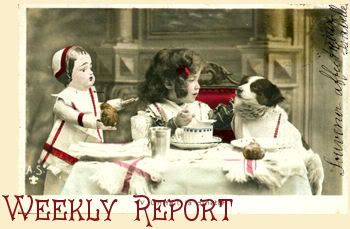
His reasons for wanting to go to middle school are mostly social - he misses his friends and is jealous that his brothers are at the school while he is not. He also feels that I assign too much work and work that is too hard (ridiculous!). However, he did return for part of last year and quickly returned home, hence my hesitation in allowing him to go back. This back and forth nonsense is tiring and really doesn't benefit anyone. Meanwhile, M has no desire to return to school and really loves homeschooling -- something that aggravates her brothers to no end!
This was our first week to utilize a morning basket, a lovely idea I borrowed from Jen at Wilflowers and Marbles. I'll be writing more about this later, but this week our work included the catechism/liturgical work below, reading from Nature in Verse by Mary Isabella Lovejoy and a picture study/comparison of "The Gleaner" by Jules Breton and "The Gleaners" by Jean-François Millet.
Religion
- Each day began with a reading from Saints for Young Readers, Vol. 2, followed by lesson work from St. Joseph's Baltimore Catechism No. 2. This week, the kids were still on Lesson 1...M mastered it two weeks ago, but J is still struggling with the memorization which is not something he enjoys! Next week we will be moving on to Lesson 2.
- Nearly every morning I read a little from Our Lady's Book by Lauren Ford.
- On Wednesday, we celebrated the Birth of the Blessed Virgin Mary with vanilla birthday cupcakes. We read that, "The birth of Our Lady was like a dawn. When the sky starts to turn a rosy pink early in the morning, we know the sun will soon come up. In the same way, when Mary was born, she brought great happiness to the world. Her birth meant that soon Jesus, the Sun of justice, would appear." For this reason, M thought that the cupcakes we made ought to have pink frosting - "just like the rosy dawn."

Language Arts
- Handwriting: Two worksheets per day (M-Th).
- Spelling: One lesson per day (M-W) from Word Power Through Spelling, spelling pre-test Thursday and final test Friday.
- Vocabulary: One lesson per day (M-Th) from Vocabulary 5 for Young Catholics.
- Grammar: One lesson per day from Voyages in English and one lesson per day from Vital English [Composition-Grammar], Intermediate.
- Reading: Two lessons from This Is Our Heritage (6th) and These Are Our People (5th), two lessons from Reading 5/6 for Young Catholics, Comprehension Skills and one lesson each from Reading 5/6 for Young Catholics, Thinking Skills.
- Alfred the Great
- William the Conqueror and the Battle of Hastings
- The Bayeaux Tapestry
- Henry II and Eleanor of Aquitane
- King John and the Magna Carta
- Richard the Lionheart
- Knights
This week we continued to review basic math facts - especially multiplication and division. Next week we'll be diving into our new Singapore books (finally!).
Friday Fine Arts

This week we celebrated our first Friday Fine Arts "Fiesta", beginning our study of Diego Rivera and Frida Kahlo. Because Amazon took their own sweet time delivering our books (they arrived on Thursday), my planning time was minimal. Fortunately, one of the books, Frida Kahlo and Diego Rivera: Their Lives and Ideas, 24 Activities by Carol Sabbeth was all I really needed. It is an awesome resource, perfectly suited to our semester-long artist study. The biographical information is excellent and every single one of the activities is really good (unlike many similar activity books where half are unusable).
We read the first eleven pages, learning about the childhood of Diego Rivera and the influence of artist Jose Guadalupe Posada. We examined Diego Rivera's mural, "The Making of a Fresco Showing the Building of a City..."
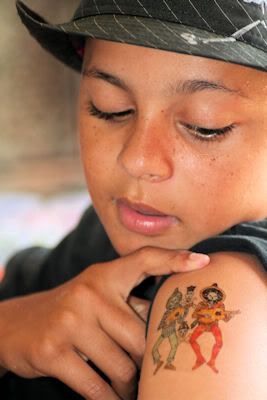
I had planned to make Sugared Fritters, but then realized these Cinnamon Sugar Tortilla Crisps were much quicker and easier! Unfortunately, they were a little too well done, but they were still pretty good.
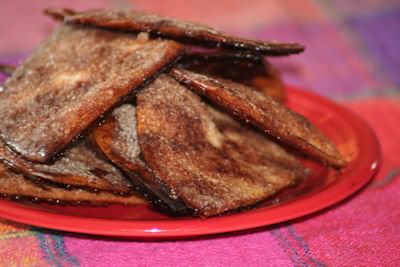

Our art project for the day was Jose Posada-inspired printmaking. I had wanted to do it this way, but didn't get the scratchboard in time, so we had to follow the alternate instructions (using styrofoam plates) in Frida Kahlo and Diego Rivera: Their Lives and Ideas, 24 Activities. The results weren't that great, probably because we used Crayola markers rather than the permanent markers suggested in the book, but everyone had fun regardless.
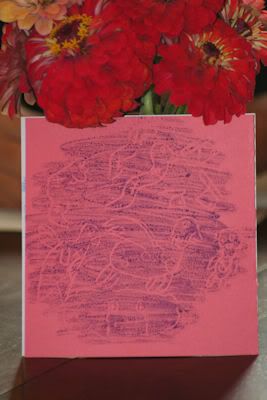
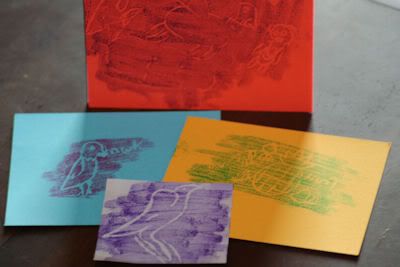
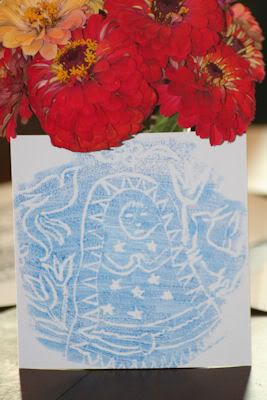
While working on our art project, we listened to the lively music of Los Lobos, "La Pistola y El Corazon" - the kids very much enjoyed this CD!
We did not begin our Pablo Neruda poetry study yet because I was not expecting the books I'd purchased about him to be chapter books (yikes!). Clearly I need to pay more attention next time I'm ordering resources! I'll be determining our schedule for those books this weekend.
Handwork
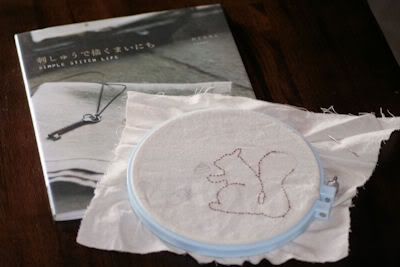
Labels: Weekly Report
A STORY OF HARVEST TIME
Following these were the gleaners, the poor people of the village, and the strangers who were without homes in the land; for it was a law of that county try that all the loose grain that was upon the ground and all that was left uncut by the reapers should belong to the needy and homeless. —James Baldwin.
Read this selection over carefully.
- What do the words, above the hills, help you to picture?
- Tell how the sky would look before the sun had risen.
- How would the air feel?
- What sounds would you hear?
- Do you think the harvesters noticed these things?
- Describe the way in which the grain was cut.
- Tell how the reapers kept time with one another.
- In what way may the chanting of a song have helped them?
- Why was the song one of thanksgiving and praise?
- Describe the work of the young men and boys.
- Tell who the gleaners were in this country.
- What did they do? Tell what the law of the country gave to them.
- What do you think about such a law?
Nevertheless he had a hard struggle to get along. His pictures did not sell. He was ready to print signboards even, but the market for them was not inexhaustible. At last he moved from Paris to Barbizon, where he lived and worked for the rest of his life.
At first a small peasant house with three rooms answered for his wife and three children, but as his family increased the house was lengthened, and a studio, wash-house, and chicken-yard built in the garden.
Labels: Art
Labels: Gardening, Wordless Wednesday
From Sea to Shining Sea Supplements: Chapter 2
0 comments Posted by Kristine at 9/04/2010 06:14:00 AMHernán Cortes and the Aztecs
- The Ancient Aztecs (People of the Ancient World) by Liz Sonneborn
- History News: The Aztec News by Philip Steele
- Step Into: The Aztec and Maya World by Fiona McDonald
- How to Be An Aztec Warrior by Fiona McDonald
- The Sad Night: The Story of an Aztec Victory and a Spanish Loss by Sally Schofer Mathews
- Montezuma and the Fall of the Aztecs by Eric A. Kimmel
- The Lost Temple of the Aztecs: What It Was Like When the Spaniards Invaded Mexico by Shelley Tanaka
- Hernando Cortes: Spanish Invader of Mexico (In the Footsteps of Explorers) by John Paul Zronik
- Trapped in Tenochtitlan: An Aztec Adventure by Eric Burnett
- Captain Cortes Conquers Mexico (Landmark) by William Johnson (OOP)
- Montezuma and the Conquest of Mexico by Elizabeth Eggleston Seelye (Google Books)
- Hernando Cortés, Conqueror of Mexico by Frederick Albion Ober
- Cortes, The Spanish in the Southwest by Rosa Viola Winterburn (Google Books)
- Hernando Cortes, Pioneers on Land and Sea by Charles Alexander McMurry (Google Books)
- Hernando Cortes, Discoverers and Explorers by Edward Richard Shaw (Google Books)
- DVD: In Search of History: The Aztec Empire, Conquistadors
- The Ancient Inca (People of the Ancient World) by Patricia Calvert
- Step Into: The Inca World by Philip Steele
- The Inca: Activities and Crafts from a Mysterious Land by Arlette N. Braman
- Macchu Picchu: The Story of the Amazing Inkas and Their City in the Clouds by Elizabeth Mann
- Francisco Pizarro: Journeys Through Peru and South America (In the Footsteps of Explorers) by John Paul Zronik
- Adventures and Conquests of Pizarro by George M. Towle (Google Books)
- Pizarro, Discoverers and Explorers by Edward Richard Shaw (Google Books)
- A Room Full of Gold (Pizarro), Colonial Children, Selections from Primary Source Accounts by Albert Hart (Google Books)
- DVD: In Search of History: Lost City of the Incas, Conquistadors
- Coronado: Francisco Vazquez de Coronado Explores the Southwest (Exploring the World series) by Robin Doak (preview here)
- DVD: Conquest of America
- de Soto Coloring Page
- Great Explorers Coloring Book (Bellerophon)
- Exploration of North America Coloring Book (Dover)
Labels: Explorers, History, Sea to Shining Sea, U.S. History
From Sea to Shining Sea Supplements: Chapter 1
0 comments Posted by Kristine at 9/04/2010 05:35:00 AM
- Saint Brendan And The Voyage Before Columbus by Michael McGrew and Marnie Litz
- Brendan the Navigator by Jean Fritz
- The Penguin Historical Atlas of the Vikings
- The Vikings by John D. Clare
- Beowulf the Warrior (Living History Library) by Ian Serraillier
- Beorn the Proud by Madeleine Polland
- The Story of Rolf and the Viking Bow by Allen French
- Leif the Lucky by Ingri and Edgar P. D'Aulaire
- Viking Tales by Jennie Hall (Google Books)
- Saga of a Wineland Baby by Hauk Erlendsson c. 1000 AD, Colonial Children, Selections from Primary Source Accounts by Albert Hart (Google Books)
- The Legends of the Northmen, Young Folks Book of American Explorers, by Thomas Wentworth Higginson (Google Books)
- Prince Henry the Navigator by C. Raymond Beazley (Especially chapters 12-14, 17, 18; Google Books)
- Follow the Dream: The Story of Christopher Columbus by Peter Sis
- Columbus by Edgar and Ingri D'Aulaire
- Christopher Columbus: Sailing To A New World (In the Footsteps of Explorers) by Adrianna Morganelli
- First Voyage to America: From the Log of the "Santa Maria" (Dover)
- Meet Christopher Columbus (Landmark Books) by James T. de Kay
- Pedro's Journal by Pam Conrad
- Columbus and the New World (Vision Books) by August W. Derleth (OOP)
- The Voyages of Christopher Columbus (Landmark Books) by Armstrong Sperry (OOP)
- Throngs of Children to See Columbus (Journal Excerpt), Colonial Children, Selections from Primary Source Accounts by Albert Hart (Google Books)
- The First Explorations of Columbus (Journal Excerpt), Famous Explorers by Edwin Erle Sparks (Google Books)
- The Journal of Christopher Columbus (During His First Voygage 1492-93), Hakluyt Society (Google Books)
- The Story of Columbus by Elizabeth Eggleston Seelye (Google Books)
- Chapters 1-2 from The Evangelization of the New World
- DVD: Conquest of America, America Before Columbus, Desperate Crossing: The Untold Story of the Mayflower
- Amerigo Vespucci, Discoverers and Explorers by Edward Richard Shaw (Google Books)
- Ponce de Leon, Discoverers and Explorers by Edward Richard Shaw (Google Books)
- Balboa, Discoverers and Explorers by Edward Richard Shaw (Google Books)
- The Name America (Vespucci) and How to Find An Ocean (Balboa), Colonial Children, Selections from Primary Source Accounts by Albert Hart (Google Books)
- Leif Ericson Coloring Page
- Columbus Discovers America Coloring Page
- Ponce de Leon Coloring Page
- Balboa Coloring Page
- Myths and Legends of the Vikings (Bellerophon)
- Great Explorers Coloring Book (Bellerophon)
- Exploration of North America Coloring Book (Dover)
Labels: Explorers, History, Sea to Shining Sea, U.S. History
At least once a week I make the rounds of my favorite thrift stores, and occasionally, my favorite antique mall (I'm on the waiting list to have my own booth there, hopefully someday soon!). Some weeks I find lots of good stuff, other weeks, not so much, though I've learned by now to go often for the best deals. Though we may not have much here in Wichita, we do have a pretty awesome thrift scene.
When I'm feeling really ambitious, I'll also tackle the estate and garage sales, though those seem a bit more hit-and-miss and usually require far more foresight and dexterity than I apparently have. You see, when it comes to thrift shopping - I'm often very indecisive. Way too often I'll be thinking about an item, only to have it snatched out from under me by another (quicker!) dealer or shopper ~ this is especially true at estate/garage sales. Or, I'll spy an item and determine to buy it, but then pause to look at something else and suddenly, voila! - it's gone.
Those losses often haunt me later, but I know, you snooze, you lose! Conversely, I've also pounced on an item and purchased it way too quickly, only to later wonder, what on earth was I thinking?! I really haven't figured out the best approach yet, despite having been at this for over half my life. Nevertheless, I wouldn't give up a day of thrifting for anything!
Enough of my woes, here were this week's finds, thus far:
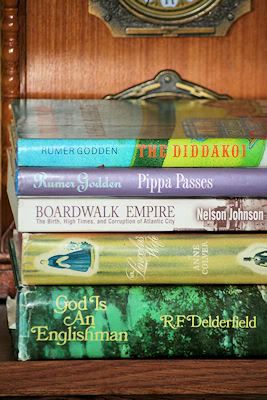
Books: God Is An Englishman, Boardwalk Empire,
The Diddakoi, Pippa Passes, Mr. Lincoln's Wife
+ 3 Like-New Holling C. Holling Books (Not Shown)
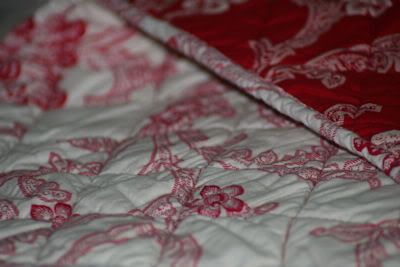
Quilted Tablerunner

Vintage Fatima Statues (.95!)
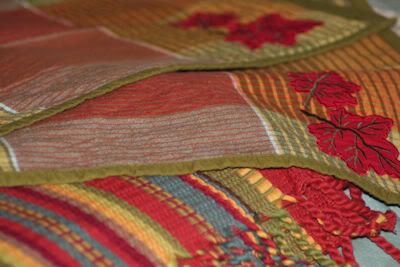
(4) Fall Placemats + New-in-Package Table Runner from World Market

Small Porcelain Virgin with Child
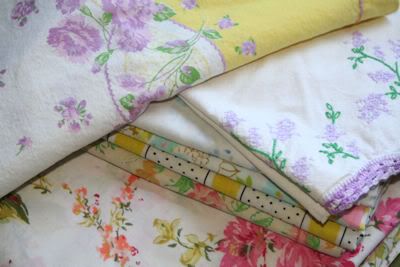
Vintage Sheets and Pillowcases

Vintage Aluminum Jello Mold + Bundt Cake Pan
And lastly, my prize ~ a gorgeous full-size vintage quilt (in very good condition), for only $3.48!:
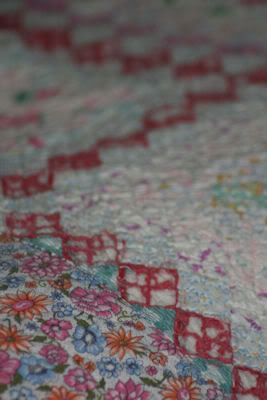
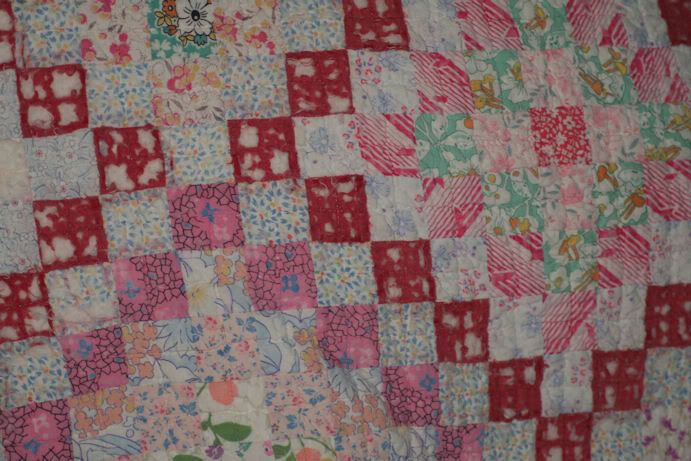

So, nothing extraordinary this week (except the quilt), but overall I'm pleased with my purchases...most of which are fairly useful. Shockingly enough, I did not come home with any glassware this week, which is almost always the first thing that attracts me!
Thrifting 101:
- Decorating with Thrift Store Finds
- 10 Common Thrift Store Finds
- Thrifting 101: A blog series by Bee Keeper Studio
- Centsational Girl: Most inspiring thrifted furniture revamps
- The Thrifty Chicks
Labels: Thrifted
You do not need to be from Kansas to appreciate the book (indeed, it was a New York Times-bestseller and Book-of-the-Month Club selection)...it's a book that speaks to the soul, encouraging you to dig deeper, wherever you may be.
From the inside cover:
PrairyErth is a vigorous and exalted evocation of the American land, its people, its past, its hopes. The very word "prairyerth," an old geologic term for the soils of our central grasslands, captures the essence of the American tall-grass country. Only a writer of William Least Heat-Moon's gifts could find in a single Kansas county the narrative of an epic, the nonfiction equivalent of the great American novel.
...Most American readers know three things about Kansas: it is flat, it has something to do with The Wizard of Oz, and the events of In Cold Blood took place there. Three illusions: the first is a lie, the second a fairy tale, the third a nightmare. Chase County is, however, a sparsely populated track in the Flint Hills of central Kansas, "the last remaining grand expanse of tallgrass prairie in America," and PrairyErth lovingly details its 744 square miles and 3,000 souls till it looms as large as the universe while remaining as intimate as a village.
PrairyErth is rich with Chase County's voices past and present, and is filled with anecdotes, gossip from its bars and cafes, Native American lore, and rueful tales of man's inhumanity to man and nature and of nature's indifference to humanity. Heat-Moon recounts the story of a farm couple swept aloft by a tornado; reveals an Indian recipe to avert lightening; unearths a century-old unsolved murder; interviews a retired post mistress, a cowboy, a quarryman, a coyote hunter, a young feminist rancher. PrairyErth sets the story of a nineteenth century tycoon, who dreamed of building a rail line to China through the county, against the memories of a retired Mexican railroad worker who can still recall every tie he spiked for the Atchison, Topeka and Santa Fe. It speaks of the passion of the slavery wars of Bleeding Kansas and the sad fate of the Kaw tribe, and gives us a hundred new ways to see stones, creeks, grasses, birds, beasts, and weather.
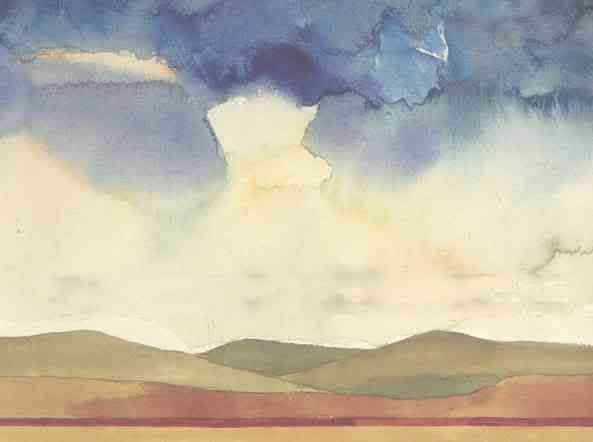
The prairie, in all its expressions, is a massive, subtle place, with
a long history of contradiction and misunderstanding. But it is
worth the effort at comprehension. It is, after all, at the center of
our national identity. -- Wayne Fields, "Lost Horizon" (1988)
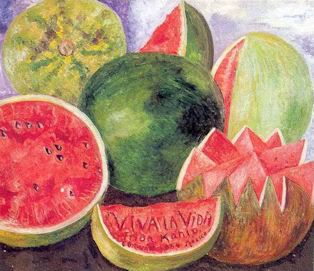
Starting very soon, and continuing through the end of the semester, we're going to try something new for "Fine Art Fridays." Rather than trying to coordinate art/music/poetry/etc. with our history studies, we're going to focus on modern Latin American art/music/poetry (thus, my daughter has re-named the day "Fiesta Fridays"). We will continue to study the Medieval arts during history.
Since we're all usually dragging by the end of the week, we needed something lively and fun to look forward to, a break from our usual routine - hence this rather unconventional idea. The idea is that we'll study and discuss a piece of art, read a little about the artist, have some dessert (inspired by Latin American flavors), read some poetry, and then do an art or craft project (while listening to music, of course!). Once in awhile there will be a video segment to watch as well.
I haven't worked out all of the details just yet, but my plan is that we'll have two primary artists to study: Diego Rivera and Frida Kahlo (not going into their lives too deeply since certain aspects wouldn't be suitable for children); we'll also touch on Pre-Columbian art, Jose Guadalupe Posada and study Mexican folk art (a source of inspiration for both artists), especially that pertaining to Our Lady of Guadalupe and Dia de los Muertos.
Below are some of the initial ideas I've compiled; I'll also be borrowing from the resources listed in my posts Fiesta de la Virgen de Guadalupe and El Dia de los Muertos. My hope is that we'll be able to further enhance this unit by a road trip to New Mexico to view some folk art first-hand!

Books
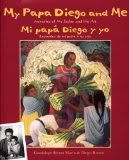 Frida Kahlo and Diego Rivera
Frida Kahlo and Diego Rivera- Getting to Know the World's Great Artists: Frida Kahlo by Mike Venezia
- Frida Kahlo: The Artist in the Blue House by Magdalena Holzhey
- Me, Frida by Amy Novesky
- Frida Kahlo (Artists in Their Time) by Jill A. Laidlaw
- Frida by Jonah Winter
- Frida: Viva la vida! Long Live Life! by Carmen T. Bernier-Grand
- Frida Kahlo and Diego Rivera: Their Lives and Ideas, 24 Activities by Carol Sabbeth
- Getting to Know the World's Great Artists: Diego Rivera by Mike Venezia
- Diego by Jonah Winter
- Diego: Bigger Than Life by Carmen T. Bernier-Grand
- My Papa Diego and Me by Guadalupe Rivera
- The Journey of Diego Rivera (Art Beyond Borders) by Ernest Goldstein
- Folk Treasures of Mexico: The Nelson A. Rockefeller Collection by Marion Oettinger
- Posada's Popular Prints by Jose Posada
- Mexican Folk Art Coloring Book by Marty Noble
- ABeCedarios: Mexican Folk Art ABCs in English and Spanish by Cynthia Weill
- The Crafty Chica Collection by Kathy Cano Murillo
- Guadalupe: Body and Soul by Marie-Pierre Colle
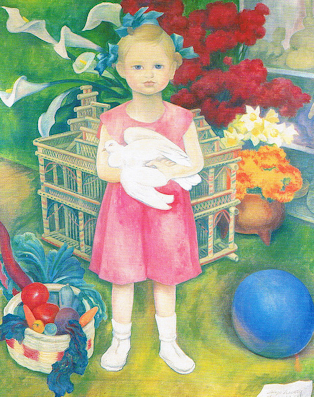
- Retablo-Style Self-Portrait
- Self Portraiture with Pets
- Parrot Paradise: Drawing Project
- Mexican Folk Art Projects: Lots of great project ideas
- Art of Mexico: Projects from Incredible @rt Department
- Studying the Biographies of Frida Kahlo and Diego Rivera
- The Legacies of Mexican Artists, Diego Rivera and Frieda Kahlo A really excellent set of lesson plans
- The Life and Times of Frida Kahlo: Teacher's Guide from PBS
- Frida Kahlo Artist Study: How one homeschooling mom handled teaching Frida Kahlo
- Feeling Like Frida: A story about how one elementary school art teacher taught about Frida Kahlo
- Frida Kahlo WebQuest from NYLearns (worksheet here)
- Frida Kahlo Study (.PDF) based on the book Frida by Jonah Winter
- "Self Portrait on the Borderline Between Mexico and the United States" Lesson Plan from PBS
- "The Two Fridas" (.PDF) Lesson Plan
- Frida Kahlo Notebooking Pages: (.PDF) A gorgeous free set from Jimmie's Collage
- Frida Kahlo Cursive Copywork Pages: (.PDF) Also from Jimmie's Collage
- Fruits of the Earth by Frida Kahlo: Coloring Page
- Roots by Frida Kahlo: Coloring Page
- Diego Rivera: A Three-Week Unit for 3rd-5th Grade Students
- Diego Rivera's Murals (.PDF)
- "The Flower Carrier" Diego Rivera Lesson Plan from Garden of Praise
- "Agrarian Leader Zapata" Diego Rivera Lesson Plan from MOMA
- "Flower Festival: Feast of Santa Anita" Diego Rivera Lesson Plan Diego Rivera Lesson Plan from MOMA
- Latin American and Caribbean Modern and Contemporary Art: Handbook for Teachers from MOMA
- The Virtual Diego Rivera Museum
- Frida Kahlo Fans: Complete Gallery of Artwork
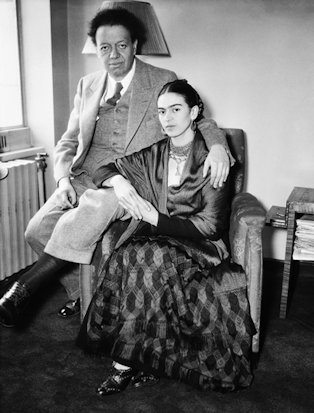
Desserts
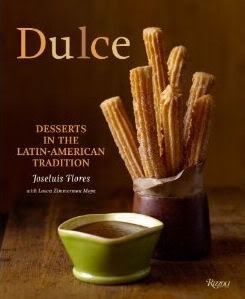
- Alfajores Artesanales (Dulce de Leche Sandwich Cookies)
- Besos (Kisses)
- Banana Macarons with Coconut Cream
- Banana Cream Pie with Chocolate and Cinnamon
- Capirotada (Mexican Bread Pudding)
- Chocolate Flan
- Churros with Spiced Chocolate (Adapted here)
- Flan with Caramel Cream Cheese
- Guava Apple Crisp
- Mexican Ice Cream Sundaes with Cinnamon-Chocolate Sauce
- Oaxacan Chocolate Cake
- Oaxacan Hot Chocolate (Can also be ordered here)
- Pastelitos de Boda (Mexican Wedding Cookies)
- Pineapple Muffins
- Rose Petal Flan
- Sopapilla Cheesecake Pie
- Stuffed Pineapple
- Sugared Fritters
- Tres Leches Cake
- Virgin Banana Margaritas
Poetry
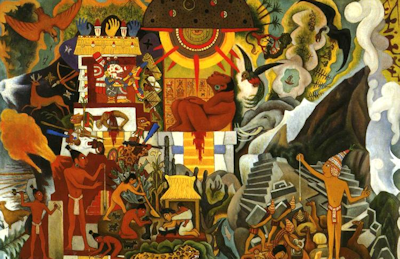
Pre-Hispanic America (Book cover for Pablo Neruda's Canto General), Diego Rivera
Pablo Neruda:

- The Dreamer by Pam Munoz Ryan, Peter Sis
- To Go Singing Through the World: The Childhood of Pablo Neruda by Deborah Kogan Ray
- When I Was a Boy Neruda Called Me Policarpo: A Memoir by Poli Delano
- Lesson Plans: Tribute to Pablo Nerudo, Part I (.PDF; 57 pgs), Part II (38 pgs), Part III (25 pgs)
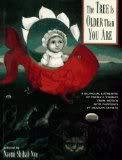
The Tree is Older Than You Are: A Bilingual Gathering of Poems and Stories from Mexico by Naomi Shihab Nye
Messengers of Rain and Other Poems from Latin America by Claudia M. Lee
Labels: Art, Fiesta, Fine Art Fridays, Planning
